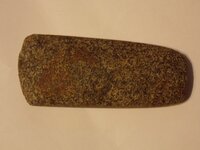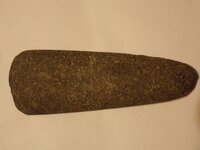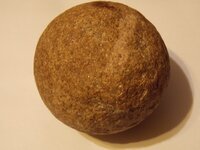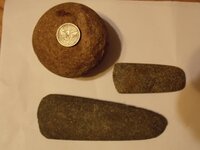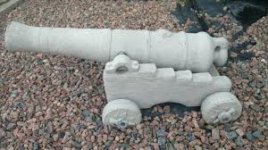Michigandirtdigger
Greenie
- Feb 10, 2013
- 16
- 5
- Detector(s) used
- MXT, Garrett pinpointer pro
- Primary Interest:
- All Treasure Hunting
Hey, This round stone was dug up along with some indian artifacts but I am having trouble identifying it. Just wondering if it could be a stone cannon ball. I am posting pics that I posted on artifacts thread for your veiwing pleasure. Thanks


